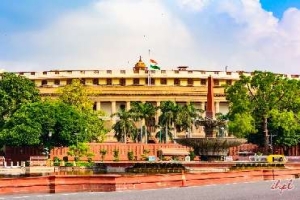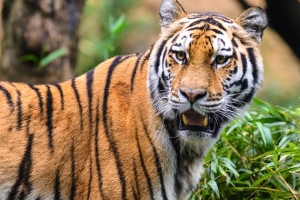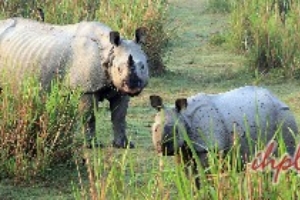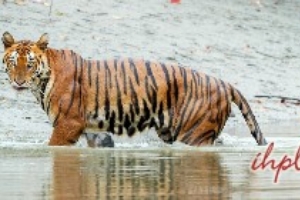Dudhwa National Park or Dudhwa Tiger Reserve is situated in the Lakhimpur-Kheri district in Uttar Pradesh, India. Stretched over a sprawling area of 614 sq. km., Dudhwa National Park is one of the top examples of the enormously varied and rich Terai eco-systems. The southern limit of the Dudhwa National Park is marked by River Suheli and the northern edge of the sanctuary lies along the Indo-Nepal border.
Dudhwa National Park is a habitation to the Swamp Deer or the largest kind of Great Indian Deer with twelve superb antlers. The Dudhwa National Park has a vast number of certain infrequent and endangered species like Bengal Floricans, Tiger, Jackal Leopard, Sloth Bear, Leopard Cat, Fishing Cat and The Jungle Cat. Dudhwa National Park is plentiful in local and migrant water birds. There are various species of mammals and reptiles in the national park. There are 101 tigers and 4 leopards in the Dudhwa Tiger Reserve. The national park has a few rhinoceros and birds like Bulbul, Painted Storks, Cranes and night birds like Bee Eaters, Great Indian Horned Owl, Kingfishers and Woodpeckers.
Conservation History of Dudhwa National Park:
The Swamp Deer or the largest types of Great Indian Deer were considerably waning in their numbers due to loss in their natural habitation. A small area known as the Sonaripur Sanctuary was demarked in 1958 for the conservation of this rare kind of deer in order to save the rest of the existent inhabitants. Afterwards, the area of Sonaripur Sanctuary was extended to 212 sq. km. and was renamed as the Dudhwa National Park. The area of the park was further stretched over an area of 614 sq. km. and was stated a National Park in 1977. Much later, after 11 years, in 1988, Dudhwa National Park became a major part of the Tiger Project. Later on, the full area of the Kishanpur Sanctuary was added to create the Dudhwa Tiger Reserve. About 150 years earlier, these forests had been the habitation of rhinoceros. Along with a project on the swamp deers, a rhinoceros project was also started in 1984. Two female rhinoceros among five died while being transported from Assam. Four more female rhinos were brought from Nepal in 1985.










